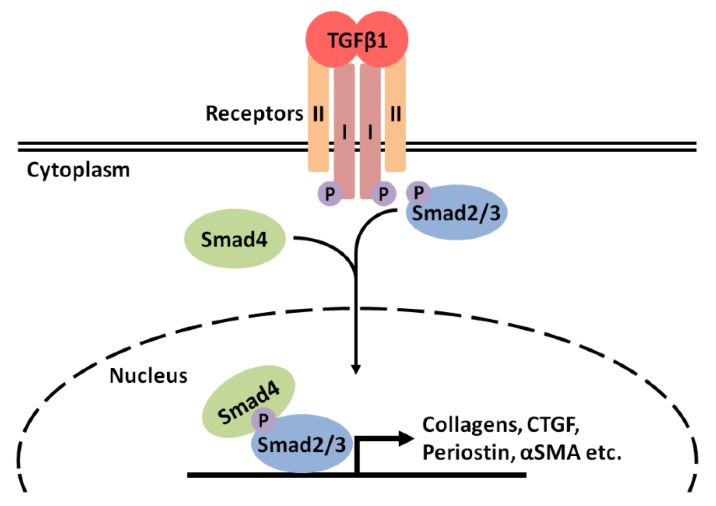Figure 2.
Outline of the canonical TGFβ1 signaling pathway. Upon activation, TGFβ1 binds to its cognate receptor, which consists of two type I (ALK5) and two type II (TGFβRII) subunits. Initial ligand binding is to TGFβRII induces the recruitment of ALK5. TGFβRII subunits phosphorylate ALK5 subunits initiating their activation. ALK5 subunits then phosphorylate the receptor-activated Smad proteins Smads 2 and 3. Phosphorylated Smad2/3 complex with Smad4 and then translocate to the nucleus to facilitate induction of expression of target genes, including profibrotic genes such as those for collagens, CTGF, periostin and αSMA. Canonical myostatin signaling proceeds in an analogous manner, but with different cognate receptors.

